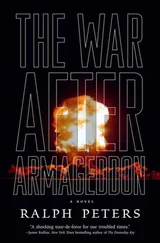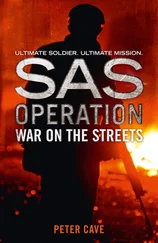“He'll die if we don't get him ashore,” Alex said. She put a cool hand on Botkin’s forehead. “Feel him. He’s on fire. He needs proper medical attention.” His face was red from radiation burns and swollen with edema.
Scott felt Botkin’s skin but said nothing. What could he say? Botkin had known the danger he faced before he entered the reactor compartment.
“Jake, did you hear what I said?” Alex insisted.
“There’s nothing I can do.”
“Alex, Jake is right,” said Abakov, slumped in the doorway to sick bay. The air was very bad and getting worse, and Abakov, like everyone else, showed the effects. “There’s nothing we can do for Botkin except make him comfortable.”
“We can’t just let him die,” Alex said.
“What’s the standard treatment for radiation sickness?” Abakov said.
“Transfusions to bring up the white cell count, and in serious cases bone marrow transplants. But he’s also got thermal as well as radiation burns, and that can lead to infection and death.”
“Do we have medicine aboard? Morphine?” Abakov said.
She turned to the radio technician petty officer, who also doubled as the ship’s doctor.
“Not much morphine, sir: just a half-dozen syrettes,” said the petty officer, a youngster with bad skin and teeth. “That’s all they allow on our submarines. We have antibiotics and burn salves. I'll do what I can for him.”
“Sorry, Alex,” Scott said. He motioned to the petty officer. “Give him morphine as he needs it, until it’s gone.”
“Aye, Kapitan.”
Scott said, “Excuse me.”
“Where are you going?” Alex asked.
“Aft to the reactor control compartment, then the CCP to keep track of the Norwegians.” “May I tell you something? You look like hell. You need some rest.”
“We all do. But there isn’t time.”
“Let the engineers worry about the reactor,” Alex said. “There’s nothing you can do, and anyway, it hasn't been damaged.”
“We had a damn close call, but the repair gang performed magnificently. I’ve asked for hourly reports from the chief engineer on the reactor’s condition—just in case.”
“Okay, but what about your condition?”
“It’s nothing a fresh atmosphere wouldn’t cure.” He jammed a Russian Navy cap on his head and went forward.
Alex’s shoulders sagged. She looked at Abakov. The policeman said, “We have to follow his orders. Jake is the kapitan now.”
The watch stirred when Scott entered the CCP. The starpom came to attention, something not required by Russian or U.S. Navy regulations.
Scott said, “Your report, Starpom?”
“Watch Condition Two set throughout the ship, sir. Steering course one-seven-zero. Speed ten knots. Depth three-zero meters. Reactor normal, both turbines on line. Battery charge to finishing rate and float. At fifteen thirty both targets retracted their towed sonar arrays and reversed course to one-six- eight. Target bearings are one-five-zero and one-five-nine. Speeds are twenty-eight knots. Range fifteen kilometers and opening out.”
“Outstanding,” Scott said.
“Thank you, Kapitan.”
Though there were no secrets aboard a submarine, Scott had toured the ship to inform the crew of Botkin’s condition and of his actions, which had prevented a disaster. And to praise them for fixing the coolant leak and preventing a disaster. He soon noticed that a profound change had come over the crew. No longer sullen and indifferent, they were eager to prove themselves capable of turning in a good performance for their American skipper. Their undisguised scorn for Botkin had evaporated, too, his heroics evoking their respect and, in some men, a sense of awe.
“Maintain present course and speed for another twenty minutes, until we’re sure both targets arc over the hill. Then we’ll go ahead full on both engines.”
“Aye, Kapitan.”
“Chief electrician.”
“Sir?” The chief electrician, a sailor in his late twenties and one of the oldest men on board, was standing watch at the main electrical control panel in the CCP.
“Any luck fixing the CO., scrubber?”
“I put two men on it, Kapitan. They think they can repair the burned-out element. Maslov is making what you call a ‘jury-rig.’ ”
“Excellent.”
The electrician gave Scott a lopsided grin.
Scott exited the CCP, feeling for the first time since leaving Olenya Bay, that he had a crew and a better than-even chance of nailing the K-363.
At SOSUS Control, Stavanger, Norway, Petty Officer Niles Horve listened closely to the threshing machine-like sounds of ships’ propellers coming through his headphones from the Skagerrak. He heard the familiar sounds made by ore carriers, container ships, fishing vessels, and ferry traffic steaming in and out of Kristian sand, a port city on the southern tip of Norway. But he also heard something else: a faint three-hundred-hertz tone. A moment later it was gone.
To neutralize interference and make a positive ID on the whisper, Horve keyed extra layers of filtration and modulation into the acoustic spectrum analyzer, then replayed what he’d just heard. Though the Norwegian SOSUS network, modeled on the U.S. Navy’s version, used powerful computerized signal processors, it still required a sonar expert like Horve to identify a specific target from among the scores that daily crisscrossed Sector Five in the Skagerrak.
Horve hunched over his console and, with eyes closed, pictured the SOSUS arrays on the sea bottom. Each array consisted of a bundle of twenty-four hydrophones sealed in a tank. Each tank—there were dozens in the Skagerrak and Kattegat—had hardened links to submarine cables that transmitted data to the collection point ashore to which Horve and other technicians like him were assigned. The system was old, and even though parts of it had been shut down to save money when the Cold War ended, it still worked.
After isolating the short sound segment that had gotten his attention, Horve began the process of comparing its generated signal to the center’s recognition file by merging them in the computer. As the information collected underwent instantaneous processing and updating, simple triangulation and a calculation of the time required for the sound waves to travel between individual arrays provided the target’s speed and base course. The computer sped through its process and in less than a minute had a match, which it displayed as a box filled with numbers and symbols on Horve’s monitor. Horve gave a start: a Russian Akula. Moving northeast at seven knots. In Norwegian territorial waters!
Horve reached for the red phone that connected him to the watch commander.
Captain Thore Jacobsen swiped his encapsulated pass through the lips of a verification terminal under the flinty gaze of the security officer on duty outside the SOSUS control node. The facility was layered with electronic sensors and a heavily armed response force. The proper authorization code appeared and the terminal peeped once. Lock bolts flew back; the door to the control node opened on silent hydraulic actuators; and Jacobsen, the SOSUS control station’s commanding officer, entered the node.
The watch commander greeted Jacobsen and led the way to a small conference room equipped with computer terminals and media drives to which Chief Horve had uploaded the material he’d analyzed and identified earlier.
“Yes, definitely an Akula,” Jacobsen said, after he’d listened to the audio and viewed the signal merge.
The watch commander said, “We ran it through a dual phase and it came up positive. Awfully quiet, those Akulas. Horve was very lucky to find her, what with the noise of the weather making up.”
“Good work, Chief,” Jacobsen said, stepping back from the bank of computer gear.
Читать дальше












